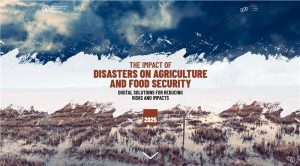Slowly, but surely. The merger process between the cooperative Centro-Sur (Cesurca) and Espárrago de Granada is now on the home straight, after a preliminary phase in which the two parts have been strengthening their ties through a marketing agreement. If everything goes according to the planned schedule, the merger will be signed and sealed between the end of February and the beginning of March.
Between the two organisations, they will market over 10 million kilos (7.5 Spanish home-grown produce), and they will cover a surface area of over 1,600 has in Spain.
Before this important step, Cesurca is returning to Fruit Logistica with its entire range: its well-known fresh asparagus, the new sustainable frozen line and its preserved produce, which has once again won the Flavour of the Year 2024 award with the Thin Wild Asparagus under the brand of Los Monteros, and which is now presenting a new design that may be seen at the trade fair.
Since the last edition at the Messe Berlin, Cesurca has experienced important new developments. The main one is the start up of its frozen department. A business line that puts a strong emphasis on sustainability. “We freeze the asparagus using the sun,” the Chairman, Antonio Francisco Zamora, explains.
In order to process the produce, they have implemented a system that operates using renewable energy and allows them to be energetically self-sufficient. This ranges from the use of biomass to blanch the asparagus, to solar panels to reach energy self-consumption.
How will the drought affect the 2024 campaign?
At the moment, the forecasts for the asparagus campaign “are not promising” due to the persistent drought. “If it rains in the spring, in the best-case scenario production would be maintained. If it doesn’t rain, the production will be even lower than in 2023,” a harvest that was already smaller compared to previous ones. Only in Guadalajara, where the company has around 180 hectares, could production increase slightly.
In general, the situation “is not easy,” the Chairman of Cesurca confesses. “Our most immediate concern is to reduce wastage and, on the other hand, study the use of tertiary water in some areas, but the infrastructures are slow and expensive to undertake.” And the fact is, on the subject of water, “the infrastructures have been forgotten. More work must be carried out on the requirements and less on advertising, as these cycles are repeated. I urge greater speed in the actions that are being announced by the Public Administrations.”
Alongside the ever-changing weather conditions, another problem that the sector must face is the “barrier to imports” that the EU Regulation of the 8th of June, 2023, set forth regarding the steps to prevent the introduction, establishment and propagation of Spodopter frugiperda (fall armyworm) in the EU territory (Smith). “They are making it very difficult for us to serve the end client 12 months of the year.” Some exporters who are looking towards other markets, instead of Europe.
Green Asparagus Interprofessional Organisation
After the launch of the Spanish Green Asparagus Interprofessional Organisation, the sector has intensified its promotion efforts with outstanding examples such as the European campaign: CuTE Healthy. Zamora, Chairman of the Interprofessional Organisation, advances that they are already studying other promotion campaigns aimed at the end consumers, along with the participation in trade fairs. “Madrid Fusión could be an option for reaching a more direct contact with the end consumers” and the Horeca channel.





















